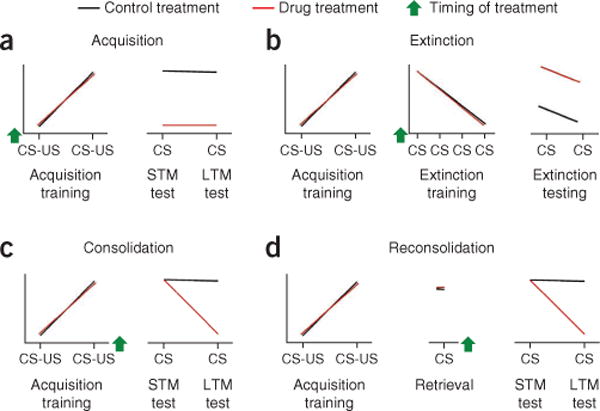Figure 5.

Different components of fear learning and modulation as they are studied in the laboratory. (a) Acquisition training involves pairings of a conditioned stimulus (CS) with an aversive unconditioned stimulus (US). A treatment is said to prevent acquisition of fear if it is applied before training and blocks both STM and LTM from forming. (b) Fear memories can also undergo extinction by repeated presentation of the CS without the US during extinction training. Treatments that block the formation of extinction memory are typically given before extinction training and result in more fear during extinction testing in comparison to control treatments. (c) The consolidation of fear memory refers to time-dependent stabilization of memory after acquisition. Treatments that block memory consolidation are usually given shortly after training and result in disrupted LTM but intact STM. (d) When a memory is retrieved it may undergo reconsolidation, which results in a period of time during which the memory is labile. Reconsolidation of memory is considered to be disrupted when a drug is applied shortly after retrieval and leaves STM intact yet disrupts LTM. Green arrows indicates the timing of a given treatment or manipulation for each of the different learning phases; x axes represent time; y axes, fear behavior.
